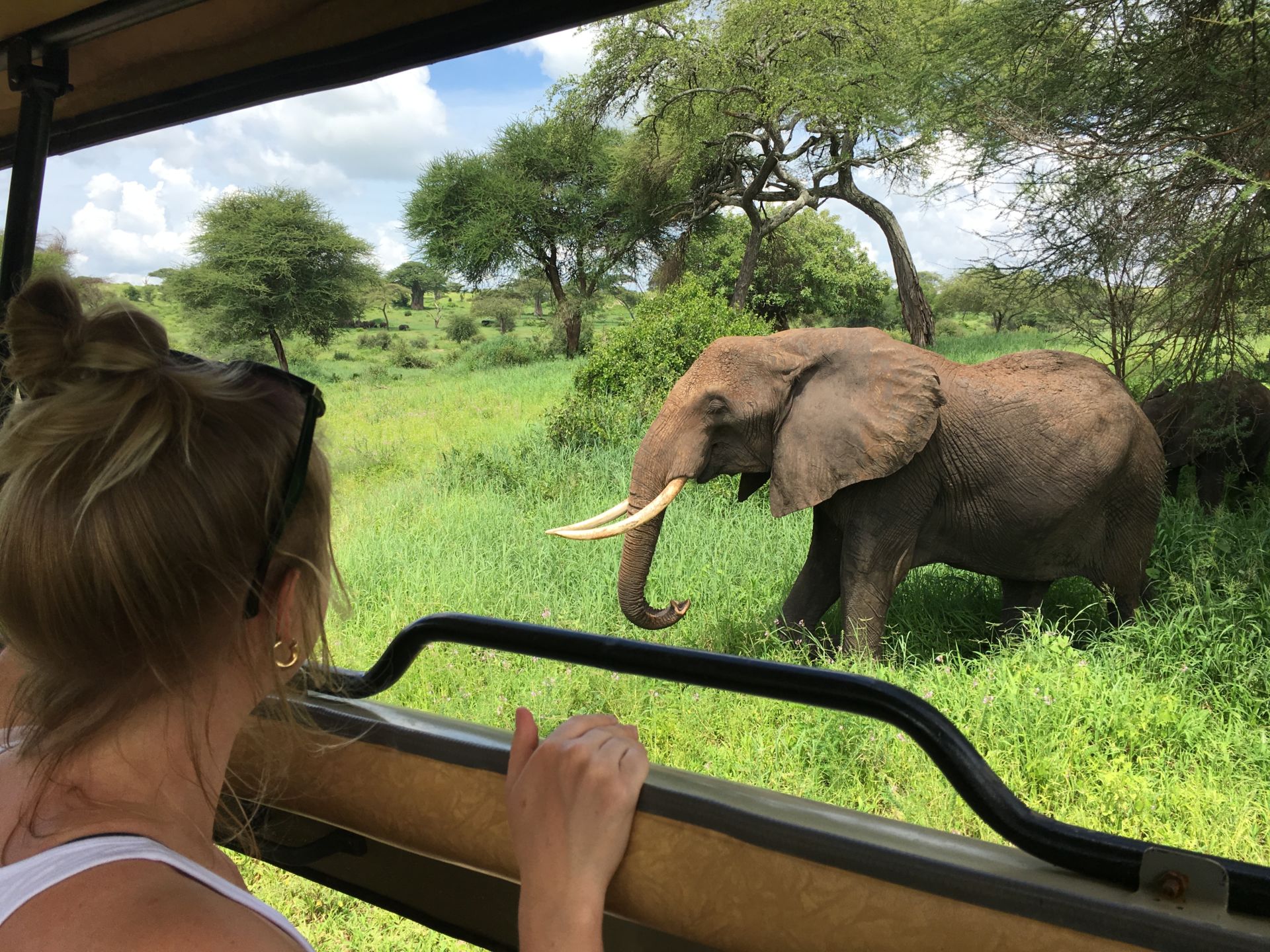With over 3,000 elephants roaming its vast plains, Tarangire National Park in Tanzania boasts one of the highest elephant populations in the world. This extraordinary concentration offers an unparalleled opportunity for enthusiasts to study and appreciate these majestic creatures up close. In fact, it’s not uncommon to witness large herds, sometimes comprising hundreds of individuals, around the Tarangire River during the dry season.
Established in 1970, the park spans 2,850 square kilometers and is a crucial refuge for elephants. Here, one can observe their intricate social behaviors and interactions in a natural habitat, making it a priceless experience for both researchers and nature lovers. Furthermore, the park’s varied landscape and year-round availability of water sources significantly contribute to its status as a must-visit destination for elephant aficionados.

Why Tarangire National Park Is a Must-Visit for Elephant Lovers
Tarangire National Park is home to over 3,000 elephants. This makes it one of the best places to see large herds of these majestic animals. During the dry season, elephants gather around the Tarangire River, creating spectacular sights. Watching them interact in their natural habitat is a memorable experience. The probability of spotting them is incredibly high.
The park was established in 1970 and spans 2,850 square kilometers. It serves as a crucial sanctuary for elephants, providing them with safe living conditions. The diverse landscapes, including swamps, granite ridges, and the Tarangire River, offer unique environments for these creatures. Visitors can see elephants in different settings throughout the year. This diversity adds to the park’s appeal.
Elephants in Tarangire exhibit fascinating behaviors and social structures. Observing their family groups and how they communicate offers insightful learning moments. Their protective nature towards their young ones is particularly heartwarming. The park is a perfect study ground for both casual visitors and researchers. This makes each visit educational and enriching.
Apart from elephants, the park is rich in other wildlife. Lions, zebras, and various bird species can be found here. This incredible biodiversity ensures that every safari is filled with excitement. Conservation efforts here help maintain the balance of nature. They aim to protect all species residing in the park.
Unmatched Elephant Population Density
Tarangire National Park boasts one of the highest elephant population densities in Africa. The park’s unique environment supports over 3,000 elephants. This gives visitors an excellent chance to see large herds. The sight of numerous elephants roaming freely is awe-inspiring. It’s a paradise for elephant enthusiasts.
The park’s dense elephant population is mainly due to its continuous water sources. Even during the dry season, the Tarangire River attracts elephants from far and wide. They flock here in search of water and lush vegetation. This leads to incredible wildlife concentrations during specific times of the year. It’s a remarkable sight to behold.
Seeing so many elephants in one place also benefits researchers. They can study these animals’ behaviors and social structures closely. The elephants’ interactions provide crucial insights into their lives. With easy access to large herds, gaining meaningful observations is simpler. Therefore, research opportunities in Tarangire are abundant.
Tarangire National Park is unique for more reasons than just its elephants. A diverse mix of other wildlife, like lions, giraffes, and zebras, also inhabit the area. Bird watchers especially enjoy the park’s varied avian species. This dense population of various animals makes each visit fascinating. The park’s rich biodiversity enhances its allure.
The Unique Behaviors and Social Structures of Tarangire Elephants
Tarangire elephants exhibit fascinating behaviors that captivate researchers and visitors alike. Their social structures are intricate and well-defined. Family groups, known as herds, consist of related females and their offspring. An older female, called the matriarch, leads each herd. Her experience and knowledge guide the group.
Communication among elephants is sophisticated. They use vocalizations, body language, and even vibrations to interact. Low-frequency rumbles can travel several kilometers. Such methods allow them to stay connected over long distances. This communication is vital for their survival and coordination.
Elephant herds display remarkable loyalty and protective instincts. Adults fiercely guard their young against predators. Mothers and aunts often surround calves, ensuring their safety. This strong bond within the herd is crucial for nurturing the young. Observing these behaviors is truly heartwarming.
Understanding elephant behavior in Tarangire offers insights into their needs and challenges. With frequent interactions, elephants form deep emotional connections. They mourn their deceased and remember locations of water sources. Such complex behavior highlights their intelligence. Witnessing this in Tarangire is an enriching experience.
Exploring the Rich Biodiversity Beyond Elephants
Tarangire National Park is renowned not just for its elephants. The park is a haven of diverse wildlife. Visitors can encounter lions, zebras, and giraffes. Each species contributes to the park’s vibrant ecosystem. This makes every safari truly engaging.
Bird enthusiasts find Tarangire particularly appealing. The park boasts over 500 bird species. From colorful lovebirds to majestic ostriches, there’s something for everyone. Bird-watching here is an unforgettable experience. It adds another layer of excitement to the visit.
Swamps within the park serve as vital habitats. These areas support various creatures, from hippos to waterbucks. The seasonal changes in these swamps provide unique viewing opportunities. Life around water sources is always bustling. Observing these areas can be very enriching.
Acacia woodlands are another prominent feature. These forests are home to lesser-known animals like bushbucks and porcupines. The varied plant life creates a picturesque landscape. Visitors often appreciate the serene beauty of these woodlands. It contrasts beautifully with the open plains.
Tarangire’s ecosystem is maintained through dedicated conservation efforts. These initiatives help protect all species residing in the park. Conservation programs aim to sustain the balance of this rich biodiversity. This ensures the park remains a thriving sanctuary. Future generations can enjoy its wonders.
The unique elements of Tarangire extend to its stunning geography. Rivers, hills, and valleys create varied terrains. Each terrain showcases different animal behaviors. Exploring these geographical features adds depth to the safari experience. The park’s diversity makes every visit unforgettable.
The Role of Conservation Efforts in Tarangire
Conservation efforts in Tarangire National Park play a crucial role in maintaining its unique biodiversity. These initiatives focus on protecting endangered species and preserving natural habitats. Regular monitoring and anti-poaching measures are essential. They ensure the safety of the park’s wildlife. Conservation in Tarangire is a collaborative effort.
One significant program involves local communities. Indigenous peoples are engaged in conservation activities. Their involvement fosters a sense of ownership and responsibility. Education about the importance of wildlife preservation is frequently provided. This synergy enhances the effectiveness of conservation efforts.
Tarangire also hosts scientific research projects. Researchers study various aspects of the park’s ecology. Their findings aid in developing better conservation strategies. Interaction between scientists and park managers is common. This collaboration helps in making informed decisions.
Conservation programs often include habitat restoration. This involves replanting native vegetation and repairing degraded areas. Restoring habitats supports the health of wildlife populations. Efforts are made to minimize human impact. This aids in maintaining the natural balance.
Funding for these conservation efforts comes from various sources. Government grants, international organizations, and private donations contribute. This financial support is vital for the sustainability of the programs. Ensuring continuous funding remains a priority. It allows long-term planning and implementation.
Overall, the success of conservation in Tarangire is evident. Wildlife populations are stable and thriving. Visitors can enjoy the park’s rich biodiversity. The dedicated work of conservationists is truly making a difference. Each visit supports these vital efforts.















